Approaching the border between Uzbekistan and Turkmenistan, I was more nervous than I had been at any other point in the trip. Not only does Uzbekistan have long and fairly arduous border processes, but we were arriving into Turkmenistan (known for being by far the most difficult country on our route) without the visa in our passports – and without even the official letter of invitation that you normally need to get the visa at the border. All we had was a verbal approval from the Consulate in Dushanbe, giving us a six digit code to quote to the immigration officials. Additionally if that all failed, we only had a single entry Uzbek visa so if we were rejected from Turkmenistan we’d then be stuck in no-mans-land with nowhere to go (which I later heard of happening to someone only a week or two earlier).
The Uzbek side was a mostly tedious two hours, and quite annoying when we were forced to buy insurance to be able to exit – not very expensive in real terms, but in terms of value over time (30 seconds) or distance (50 metres) for the coverage, pretty terrible. We’re happy to buy national insurance on entry to a country, but it’s ridiculous that the first we hear of it is when we’re leaving.
Our real problems started straight afterwards, when the Turkmen border guard didn’t even want to let us through the first gate to the immigration office without either the visa or invitation letter – uh oh! We managed to talk our way in, only to arrive at the border post at lunchtime. We had hoped that the immigration staff would know more than the lowly soldiers manning the gate, but once lunch was over they looked just as puzzled by our lack of documentation. Our hopes dipped further as several locals were turned away, filling the waiting room with crying. Thankfully, we had an international SIM card that still worked, and were able to call back to the consulate in Dushanbe. After a few hours of stress, frustration, expensive phone calls and sign language, the immigration staff were instructed over the phone how to access our invitation letter, and our visas were processed. Phew! Sadly this wasn’t the end of it, as there were several dozen forms to be filled out in triplicate, and about four different desks that needed to record the same details over again. One amusing moment was being asked, immediately after being asked if we were carrying narcotics or weapons, whether we were carrying any carpets – Turkmen carpets are world-renowned and exports are strictly controlled. Still, a strange question!
Finally free about an hour before sunset, and with only a three day transit visa, we had a choice – either we stick to our original plan of covering around 300 kilometres the first day, or we find somewhere local to sleep and miss one of Turkmenistan’s big sights. We chose to ride on into the night, and fortunately the roads were in decent condition so we made good time. Our destination was the Dervaza gas crater, better known as the “Gateway to Hell” – a very apt nickname. The exact origin story is unclear, but apparently a group of Soviet mining engineers were exploring the region for gas in the 1970s. When their drilling rig collapsed into a large gas crater, they decided to set it on fire so the escaping methane wouldn’t affect the nearby village – thinking it would burn itself out within a few weeks. Well, over 40 years later it’s still burning, lighting up the desert sky and visible from over 10 kilometres away.
Camping next to the crater (upwind!), we awoke the next morning to find that even daylight didn’t change the eerie quality – although now it looked like something from a bad sci-fi movie, with alien invaders about to emerge from their crash site.
The tracks leading back to the main highway can be tricky, with some stretches of soft sand. We had to air the tyres down to less than 10 psi to get enough traction with all our luggage.
The rest of the road passed through the endless sea of sand of the Karakum Desert. Most of the time it ran parallel to the railway line, which like Australia had tiny stations dotted along it in the middle of nowhere – no towns or people nearby. At times we had to dodge the dromedaries that wandered freely.
With that we rolled in to the capital, Ashgabat. Checking in to the most expensive ($50USD) and one of the worst hotels we’ve seen, we set about exploring one of the oddest cities I’ve ever visited. This is what happens when a narcissistic megalomaniac takes control of a country with billions of dollars of annual revenue from oil and gas exports. The old president, Niyazov, was everything you’d expect of a mad dictator. After the collapse of the Soviet Union he declared independence, naming himself Turkmenbashi (leader of all Turkmen), and subsequently winning every election with more than 99% of the vote. Among his more crazy edicts were:
- renaming all the months of the year (particularly changing January to his own name, and April to his mother’s name – which also become the word for ‘bread’).
- banning long hair or beards for men, lip synching in concerts, ballet, opera and circuses nationally;
- publicly disapproving of gold teeth (very common in Central Asia), forcing thousands of people to have them surgically removed;
- creating public holidays in honour of melons (July 10th) and horses (April 27th);
- changing the National Anthem so the chorus honours him;
- writing his own version of Mao’s Little Red Book – the “Ruhnama”, or book of the soul – more on that later.
Every single building is clad in white marble with gilt details, there are immaculately manicured gardens and parks with an army of high-vis grounds staff constantly maintaining it all, while another more literal army of police are posted every 50 metres, glaring at passers-by and pulling over drivers. Statues of heroes from Turkmenistan’s past litter the city, while most women wear traditional dress.
One of the largest statues is dedicated to the local breed of horse, the Akhal-Teke – which is the fixation of the current President (who has the amazing name Gurbanguly Berdimuhamedow). There’s even a national beauty contest for these horses on the public holiday in their honour.
The buildings around Presidental Palace Square include the several ministries and other official buildings – the opulence on display reaches new heights here. Technically photography is not allowed here, but we sneaked a few shots before being shouted at.
Further to the south there’s an entire suburb of brand new apartment buildings, empty hotels and some of the most amusing monuments ever erected by a dictator. Coming back to the Ruhnama, the book written by President Niyazov – it contains spiritual guidance, his autobiography, some of his terrible poetry, and a severely edited version of Turkmen history. It was ingrained into the population with forced lessons, which replaced algebra and physics in schools – but it’s actually a useful skill here, since the ability to recite passages of the book by heart is still a requirement for government employment or even to pass a driving licence test. Also, Turkmenbashi said he had communed with God, so that anyone who reads it three times gets a free pass to heaven. There’s a giant statue in honour of the book (note the pigeons for size) that has a mechanism inside to open every night at 8PM and play a video recording of part of the book.
Nearby is the Independence monument, known to most people as “The Plunger”. One of hundreds of large statues of Turkmenbashi, guarded by four fierce Turkmen tribesman, stands before his handiwork.
Our last stop before exiting the city was the Arch of Neutrality. Diplomatically, Turkmenbashi declared a policy of absolute neutrality, which was ratified by a plebiscite that funnily enough returned over 99% in favour. This arch used to stand in the centre of the city, where the crowning statue of the glorious leader could survey all that he built. Not only was it 12 metres high and covered in polished gold, but it was placed on a rotating plinth so that it would always face the sun. Now, it’s on the southern edge of the city, and the statue is static, but it’s still an impressive monument to megalomania.
As light rain set in, we drove up into the mountains that form the frontier with Iran, and passed a relatively quick and painless border crossing.

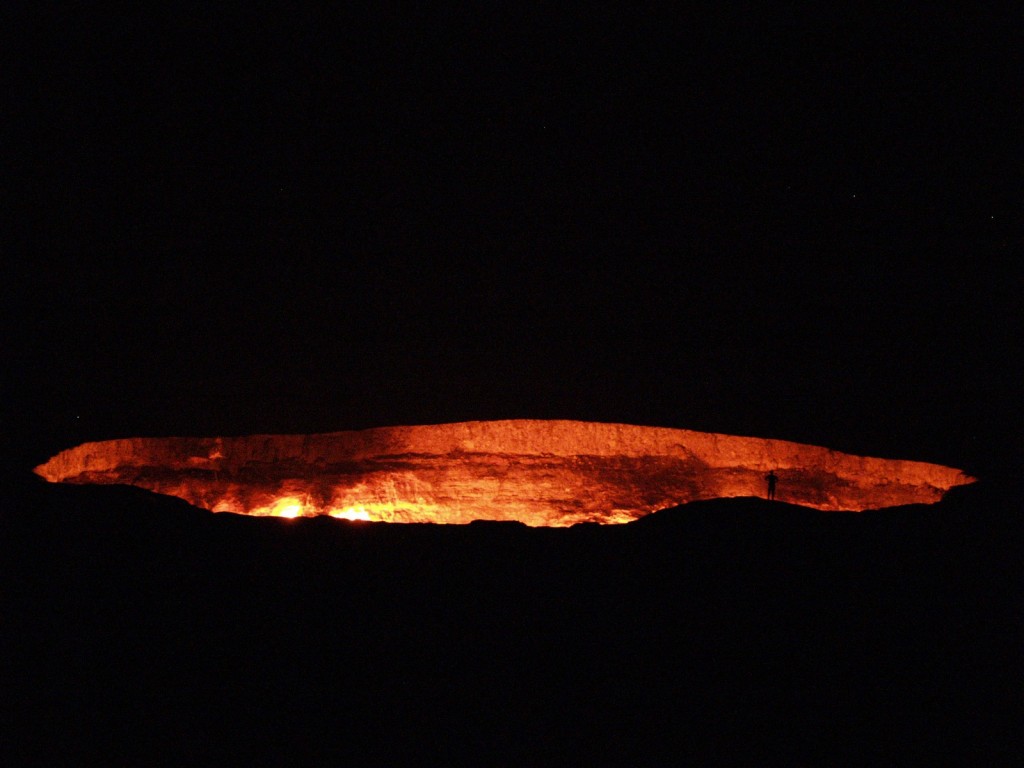
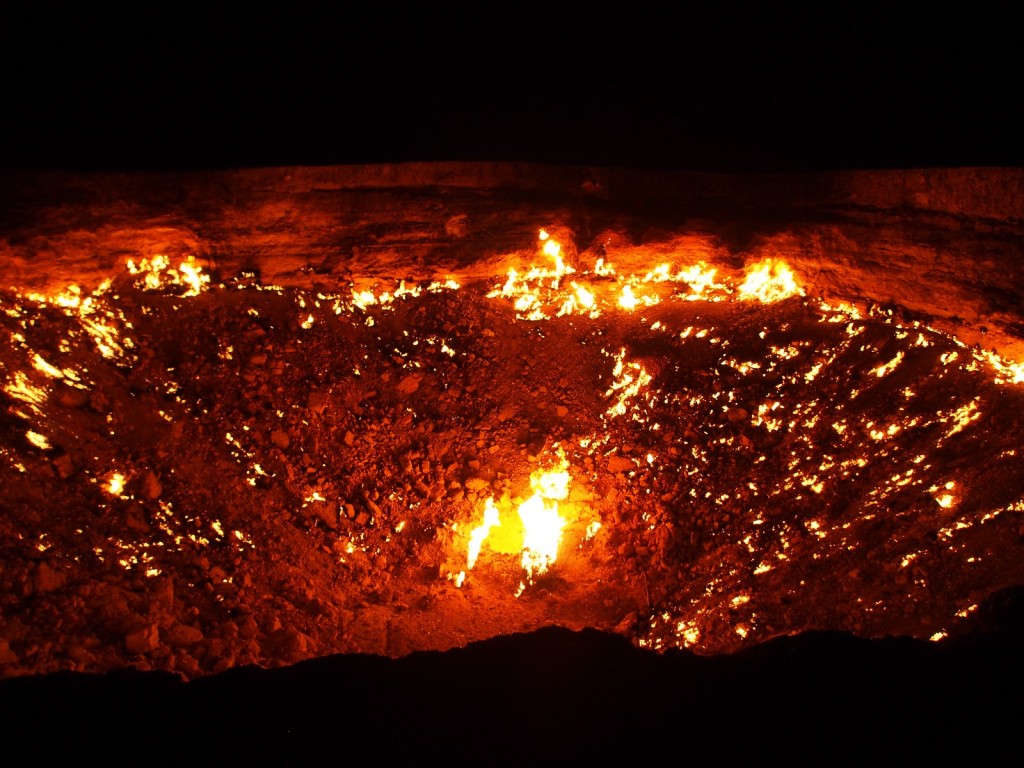
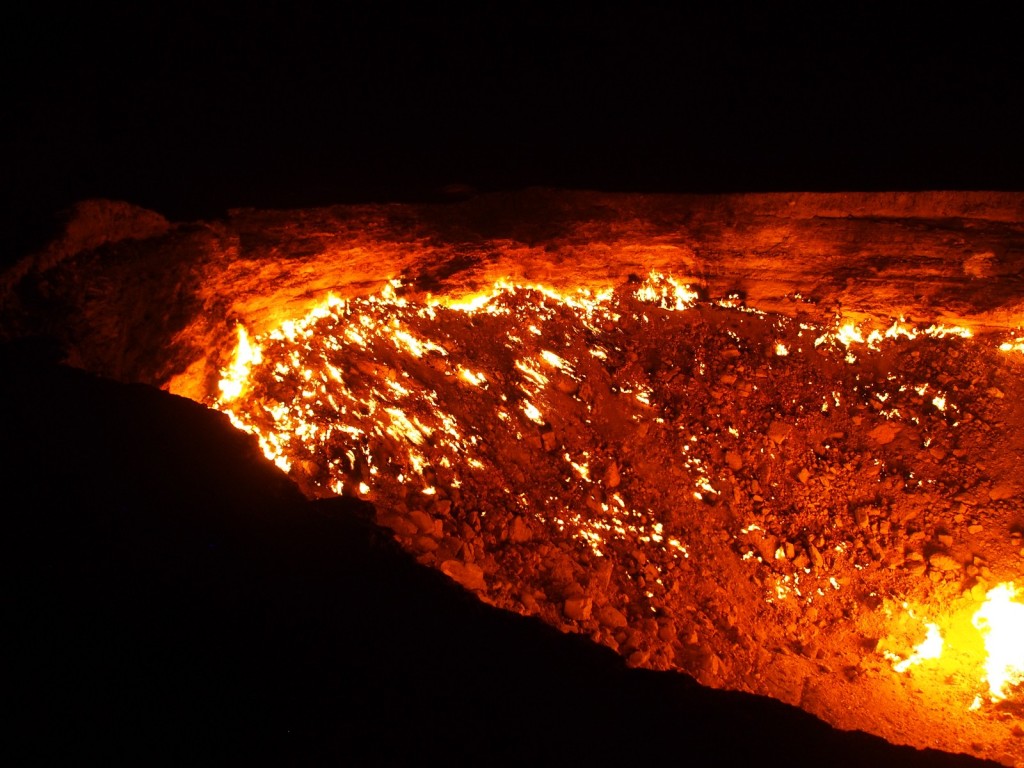
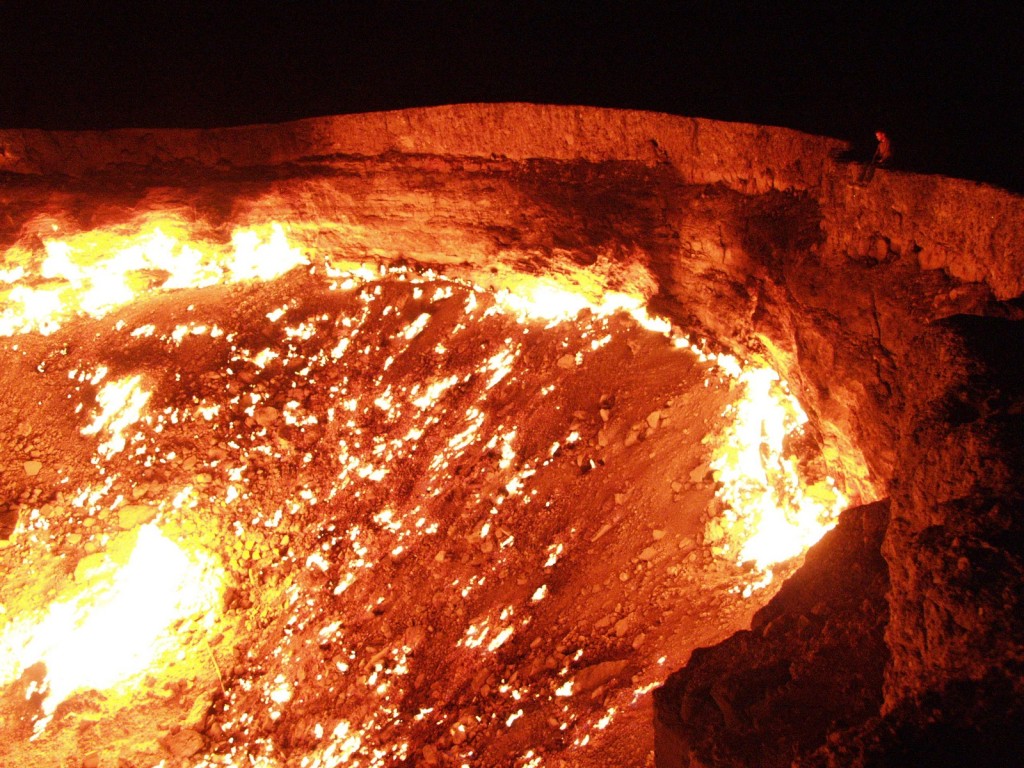
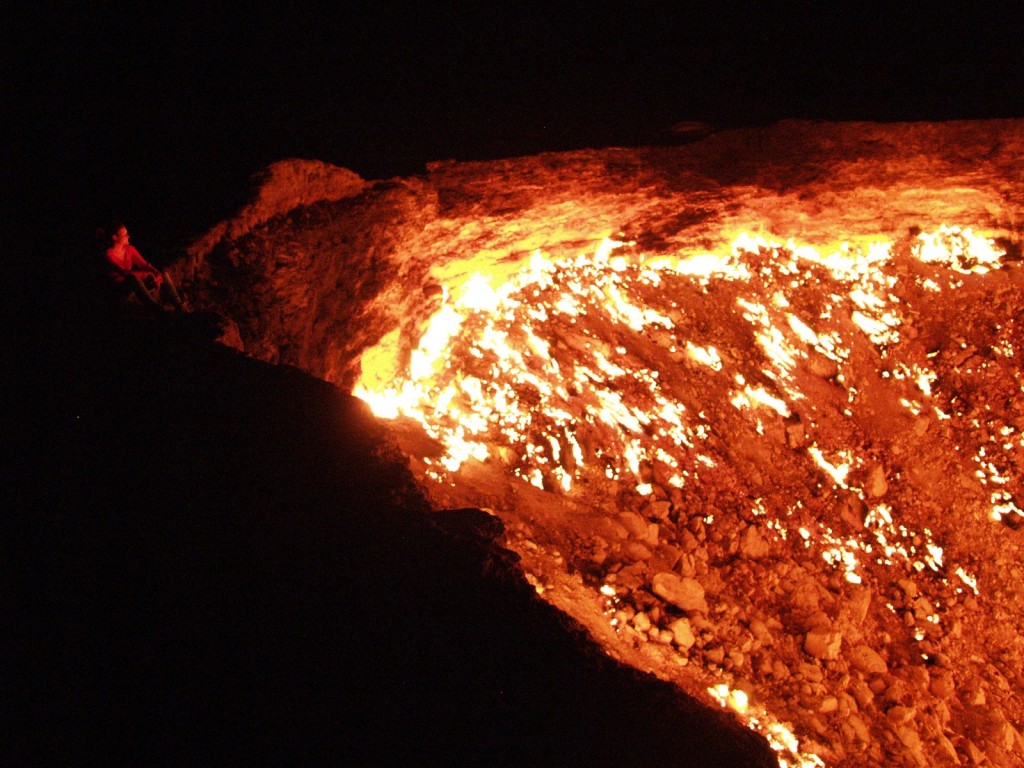

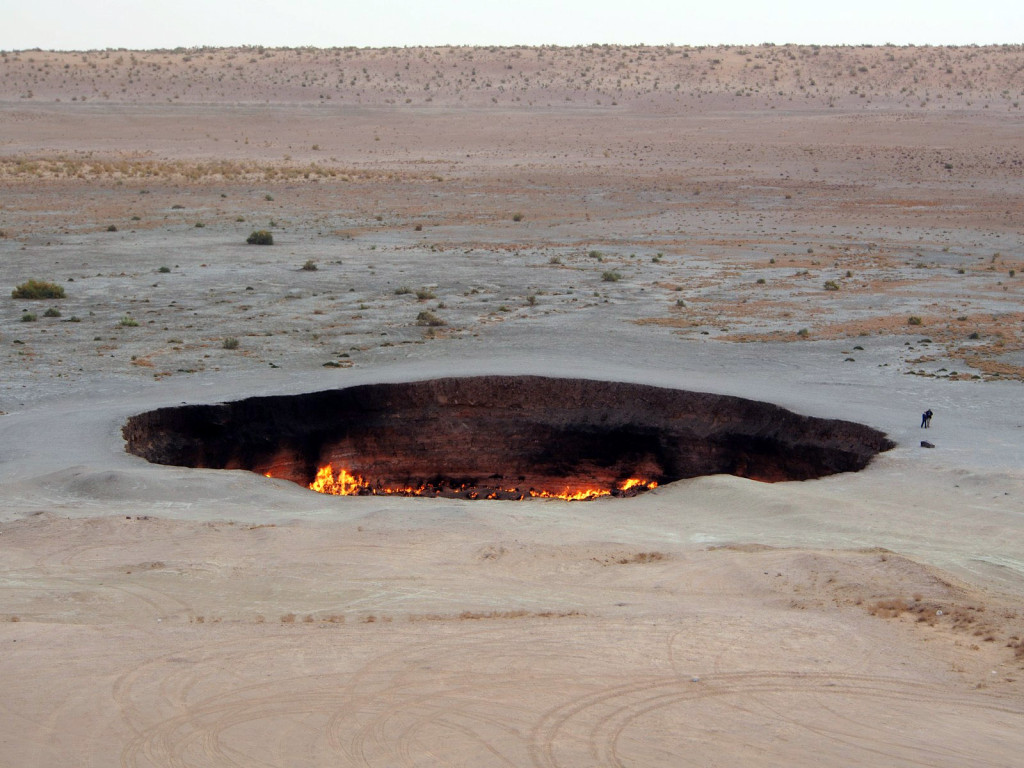
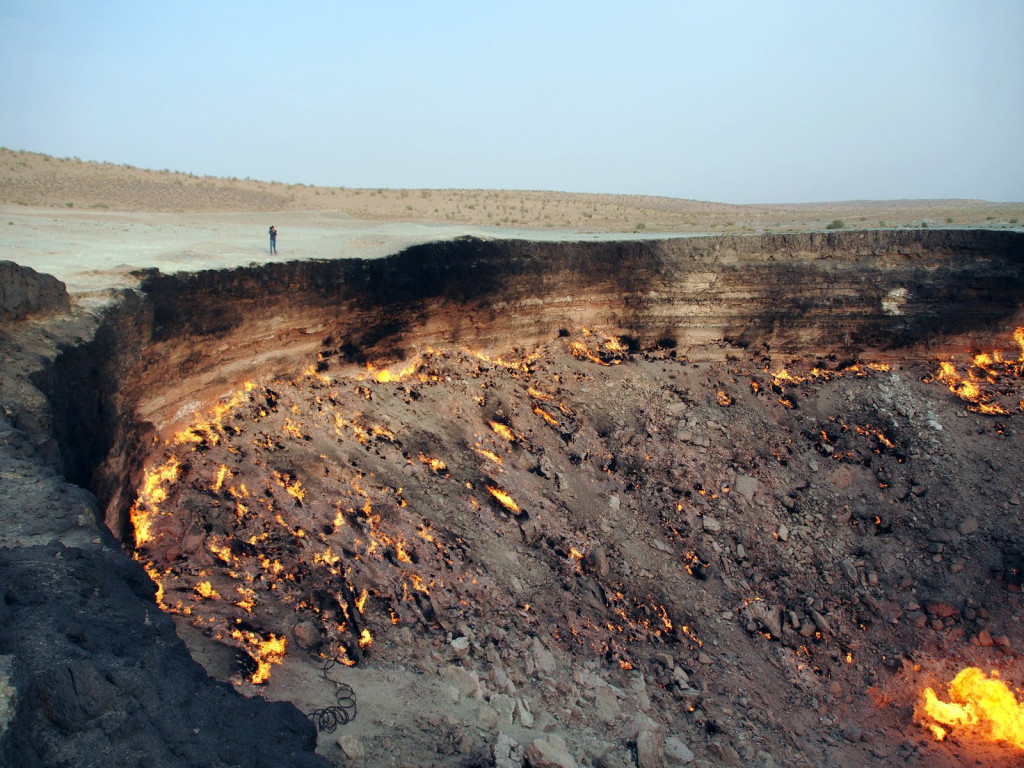
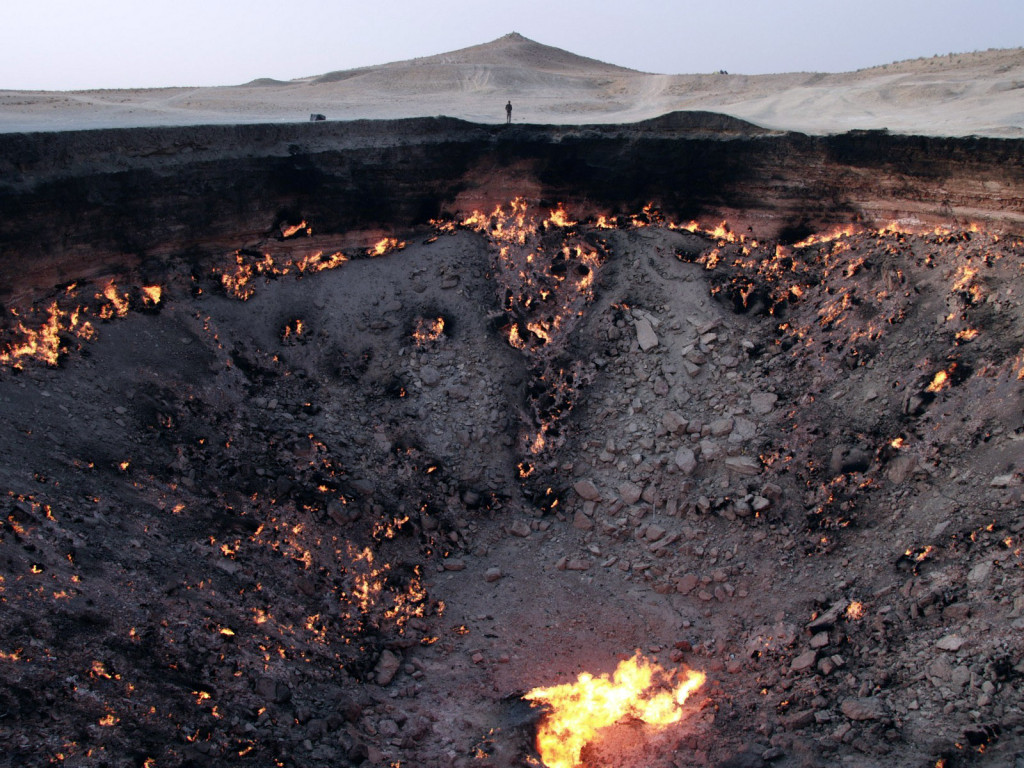
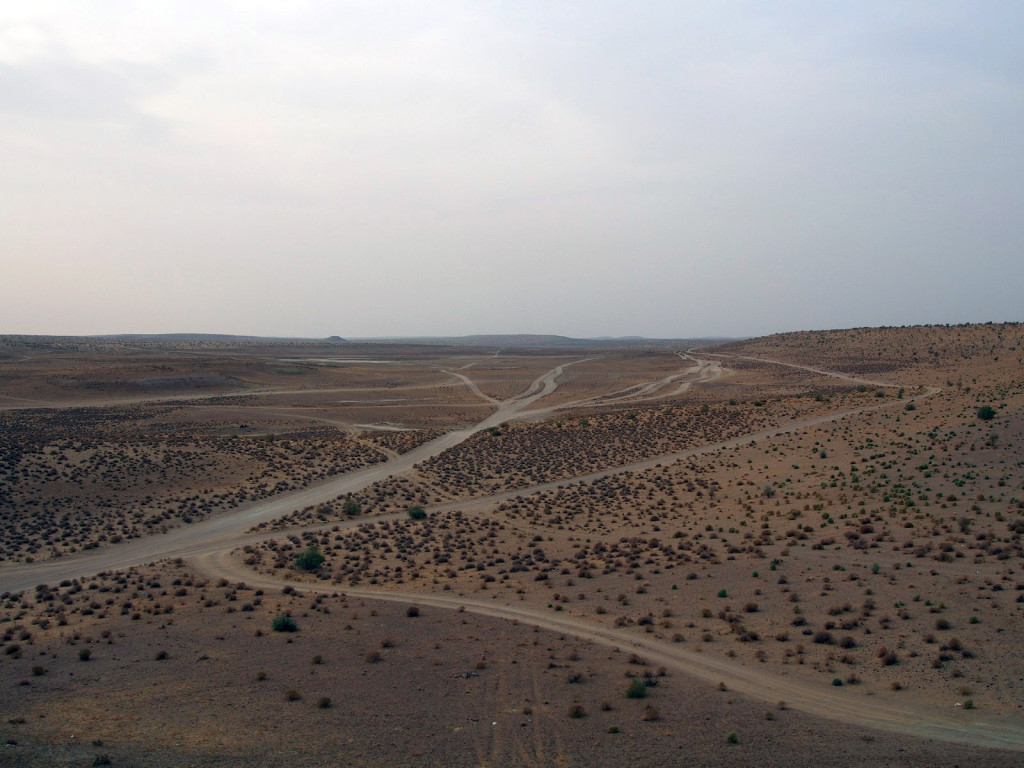
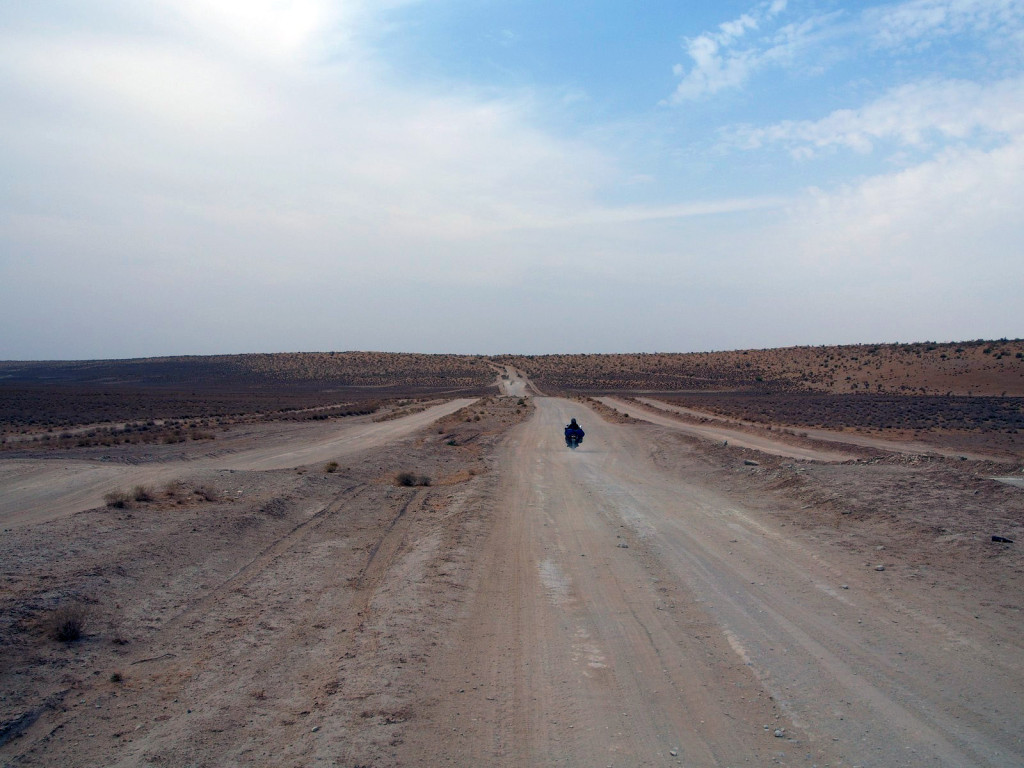
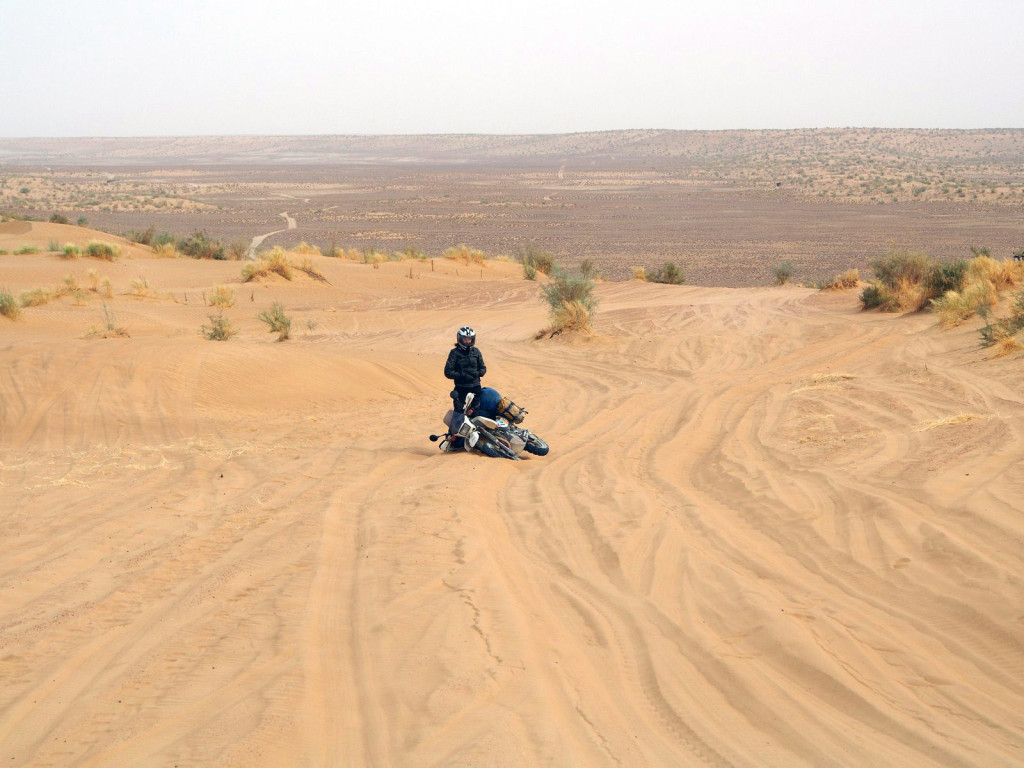
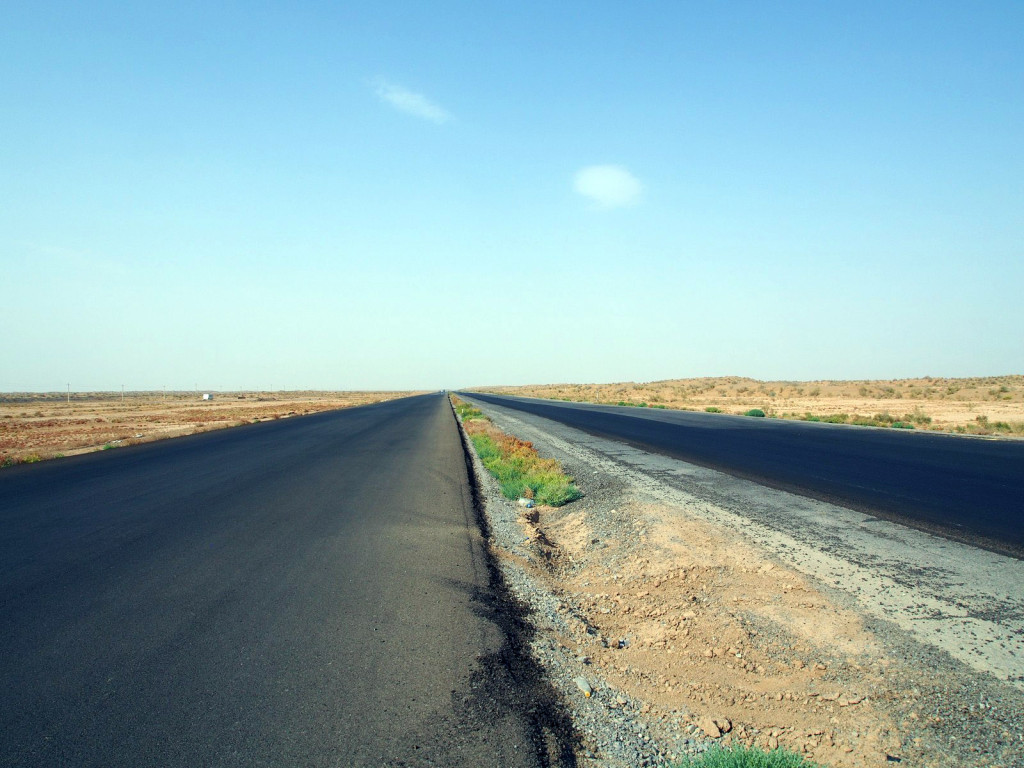
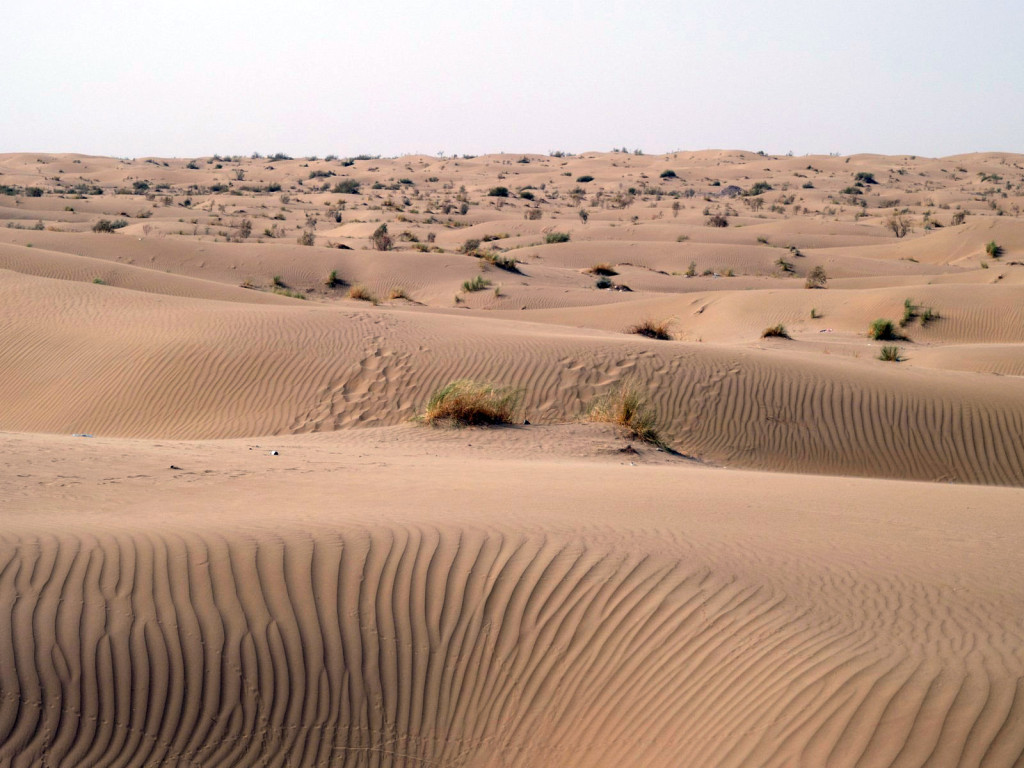
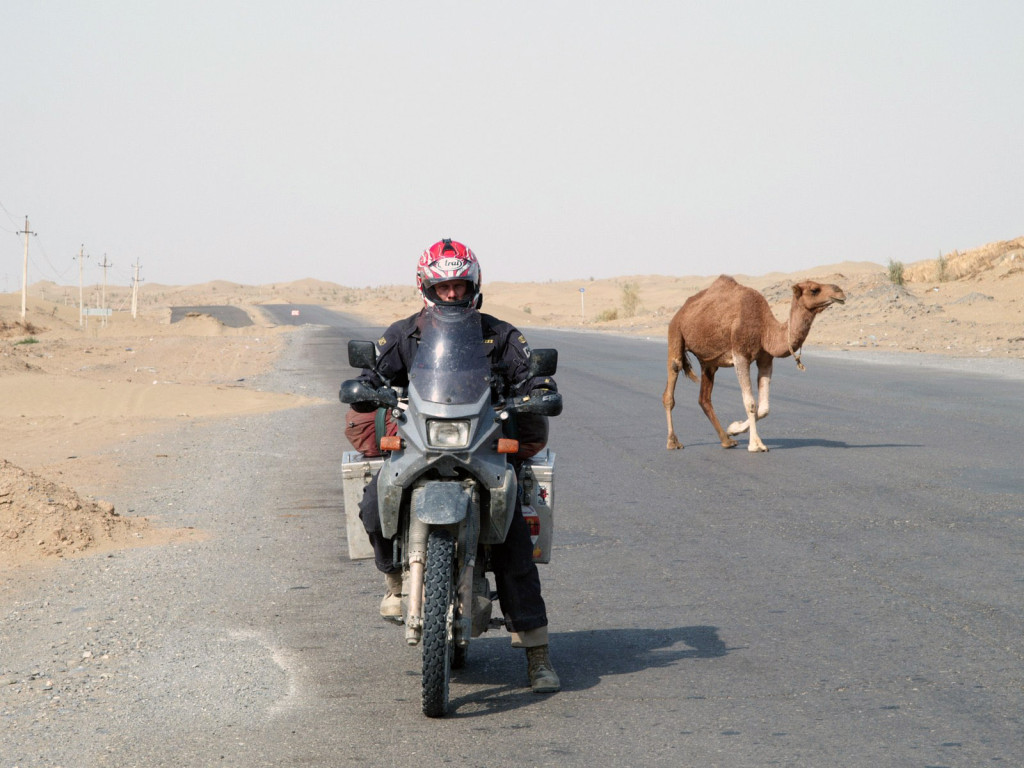
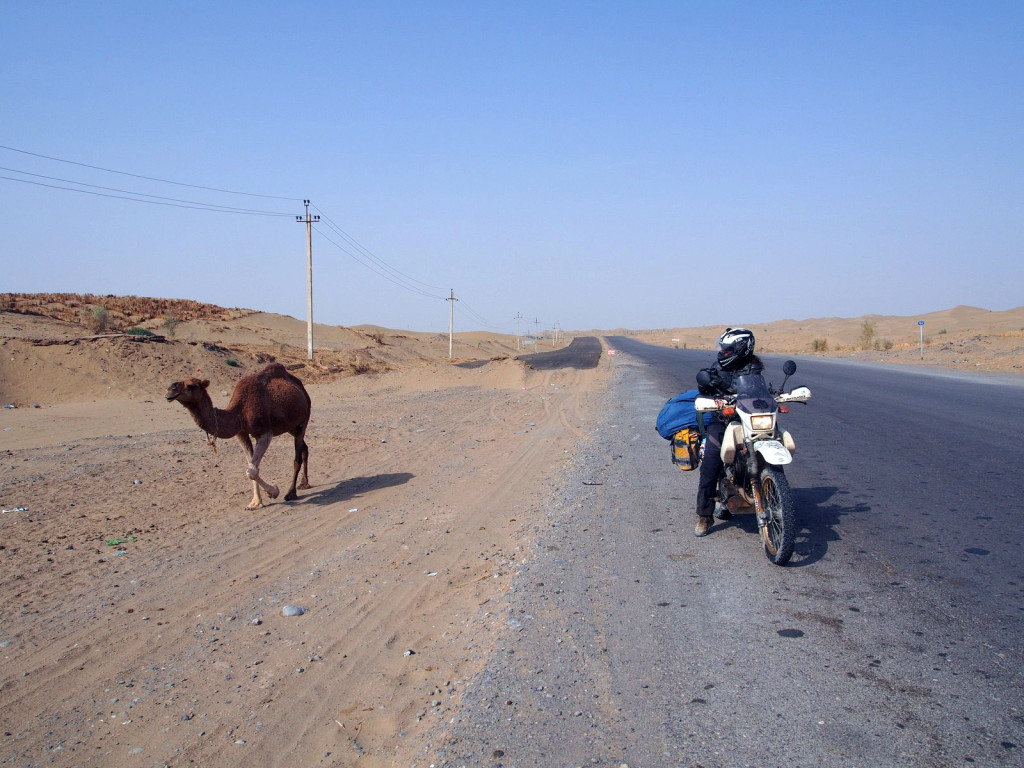
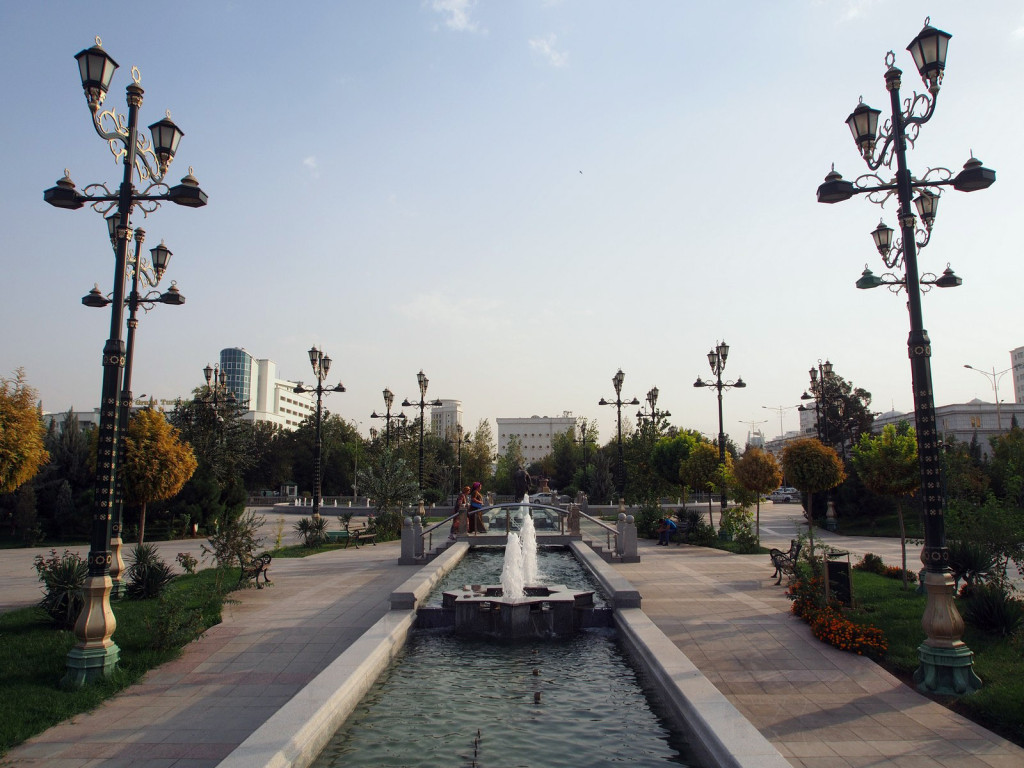
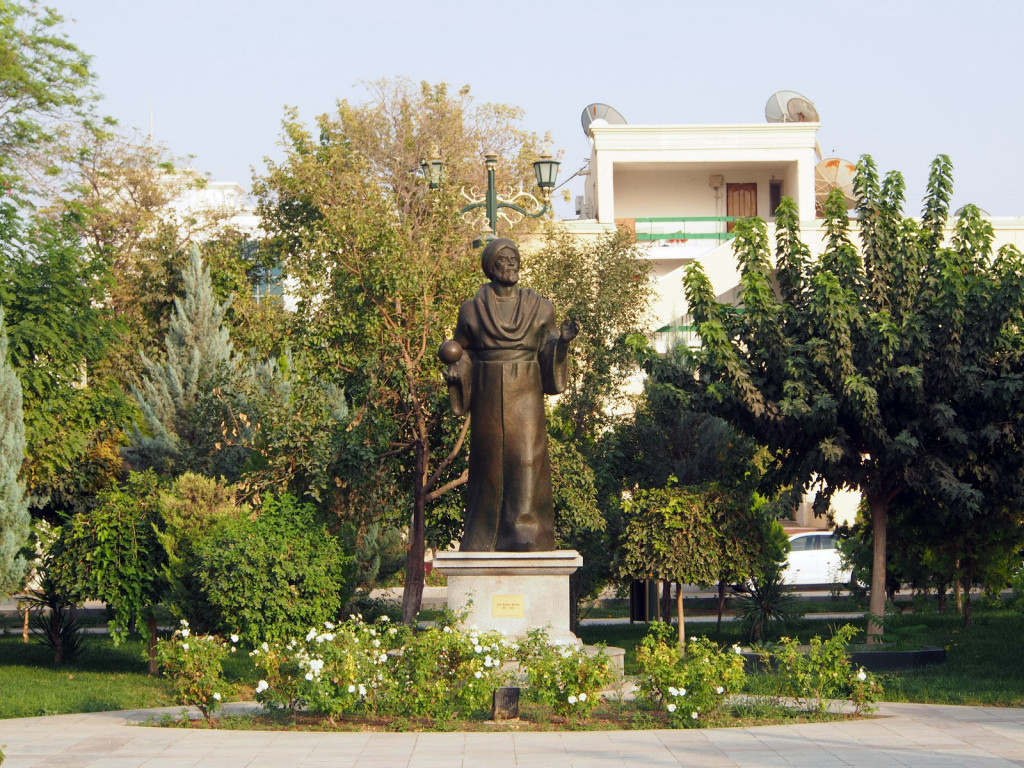
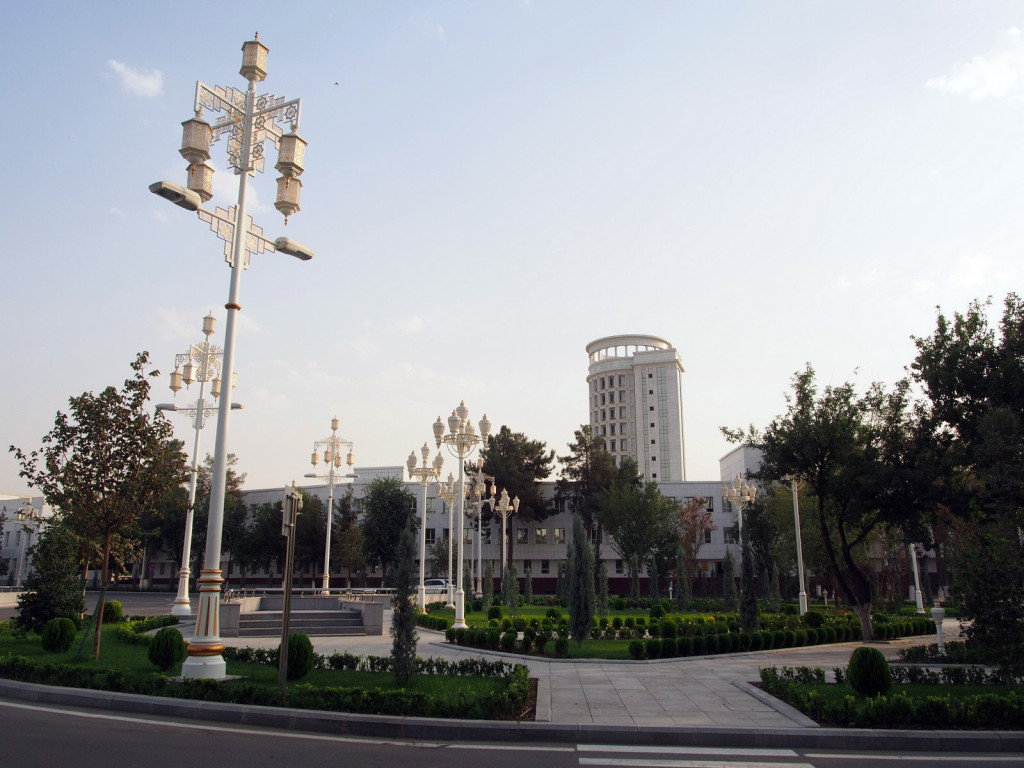
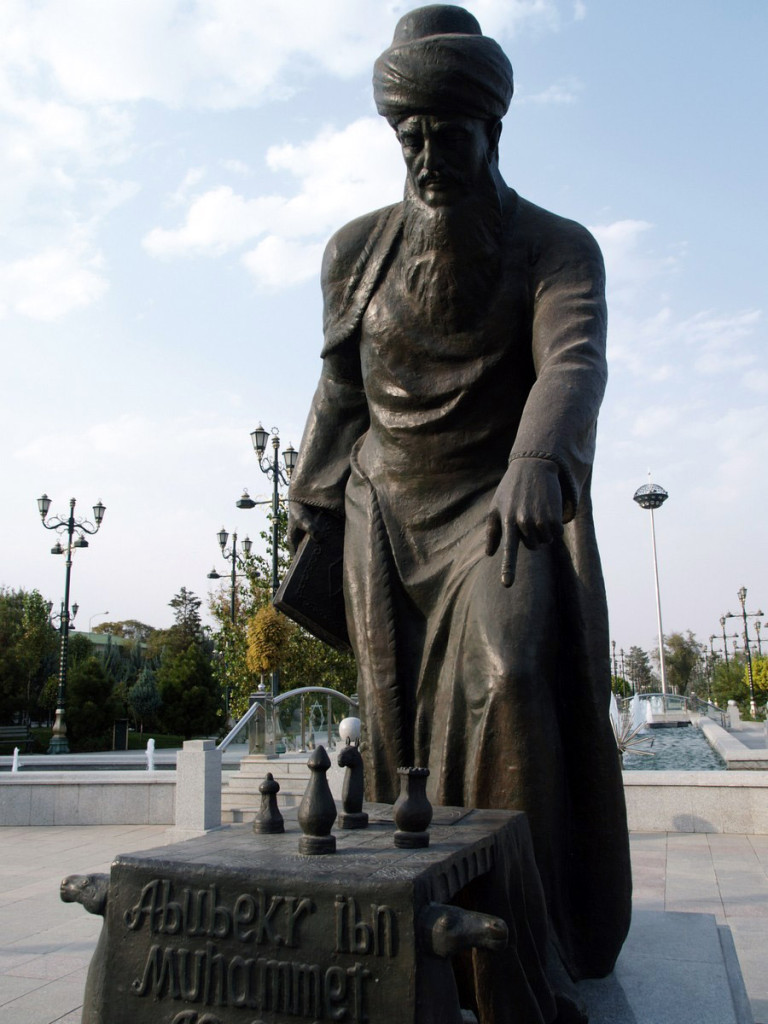

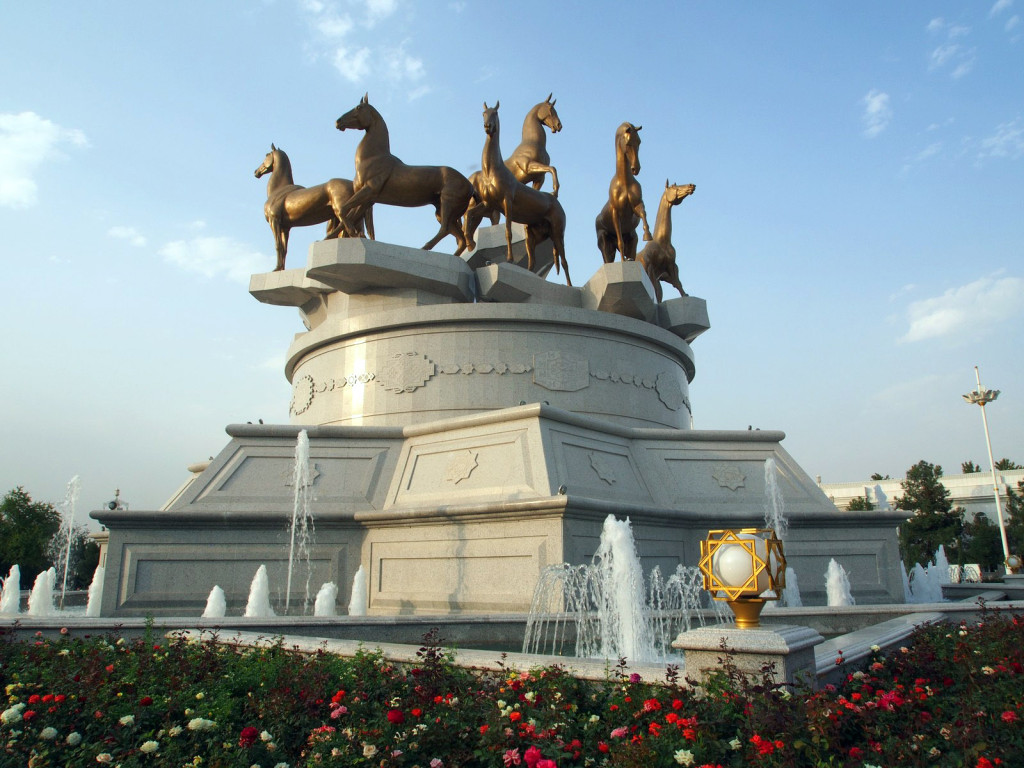
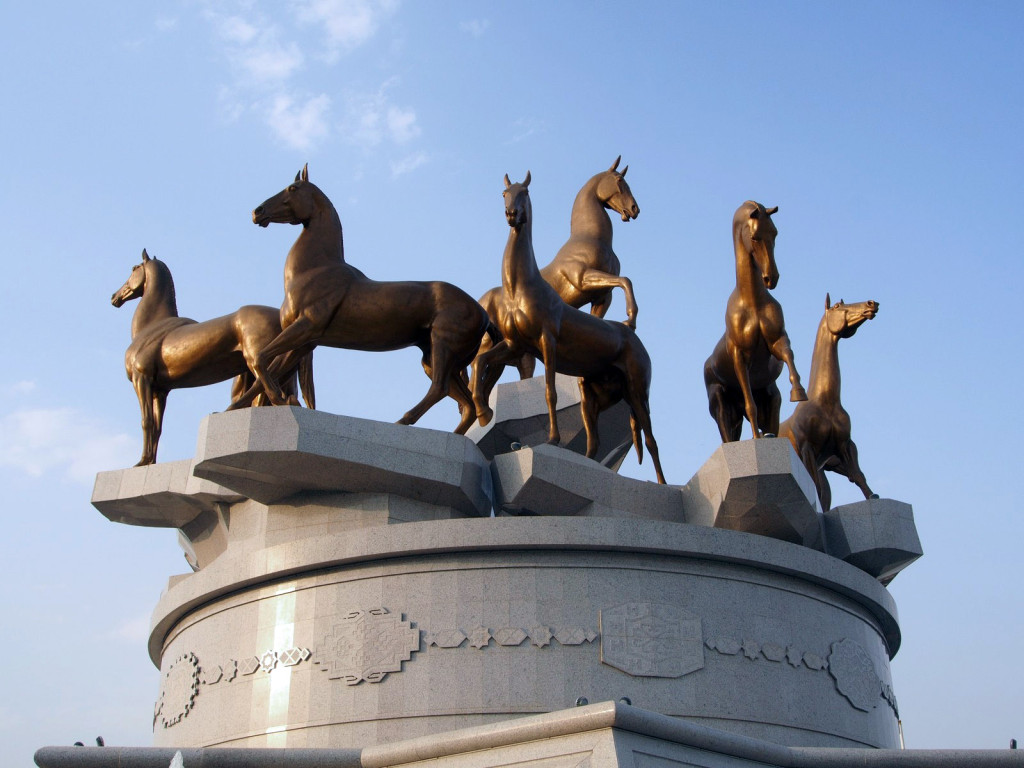
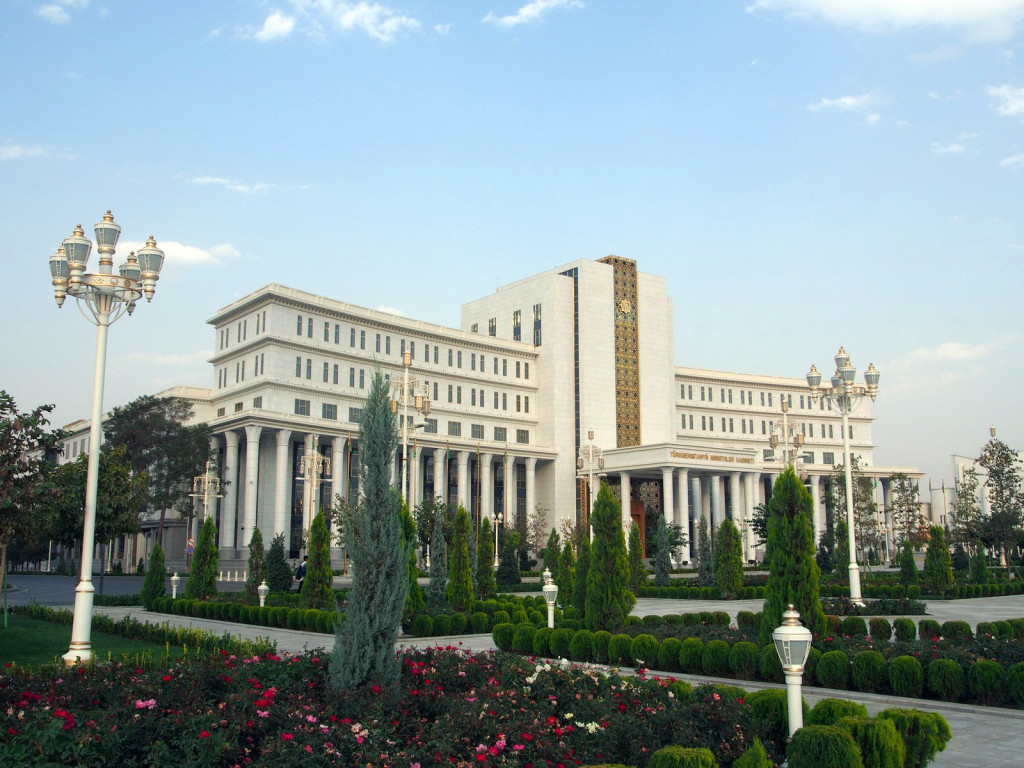
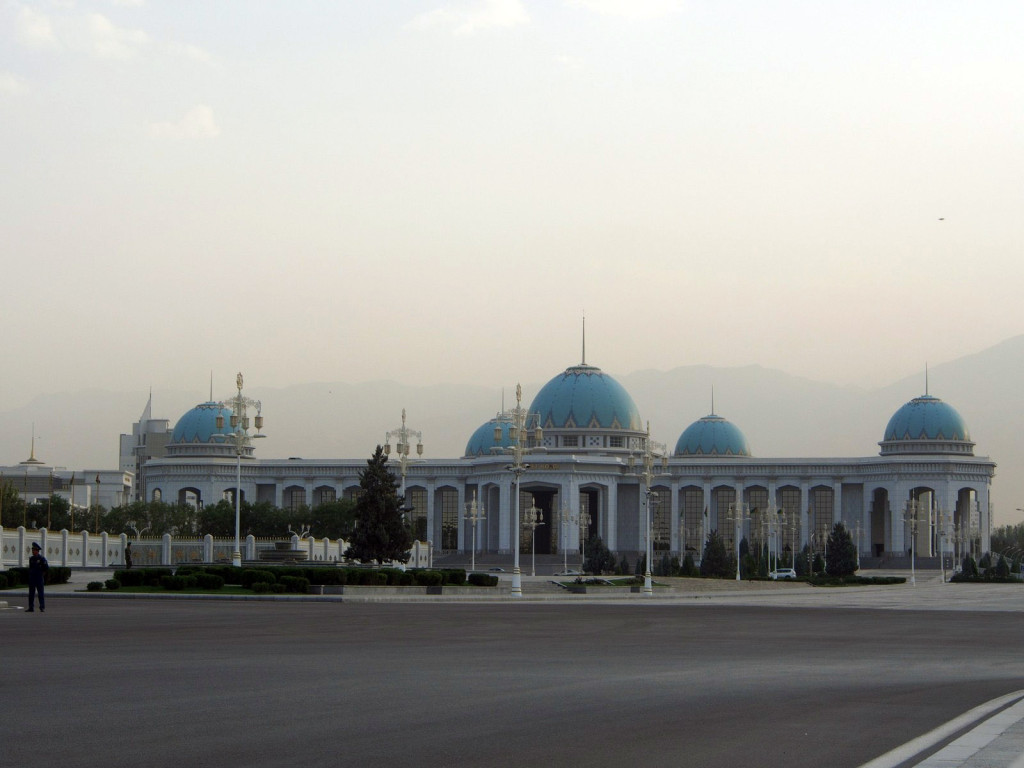
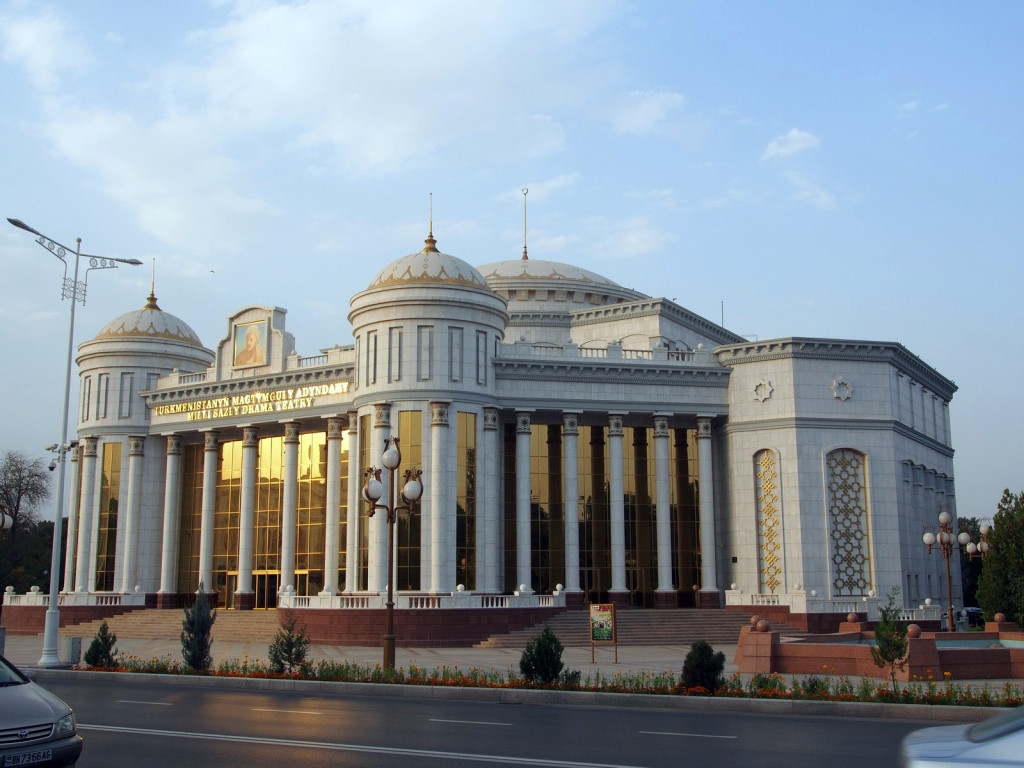
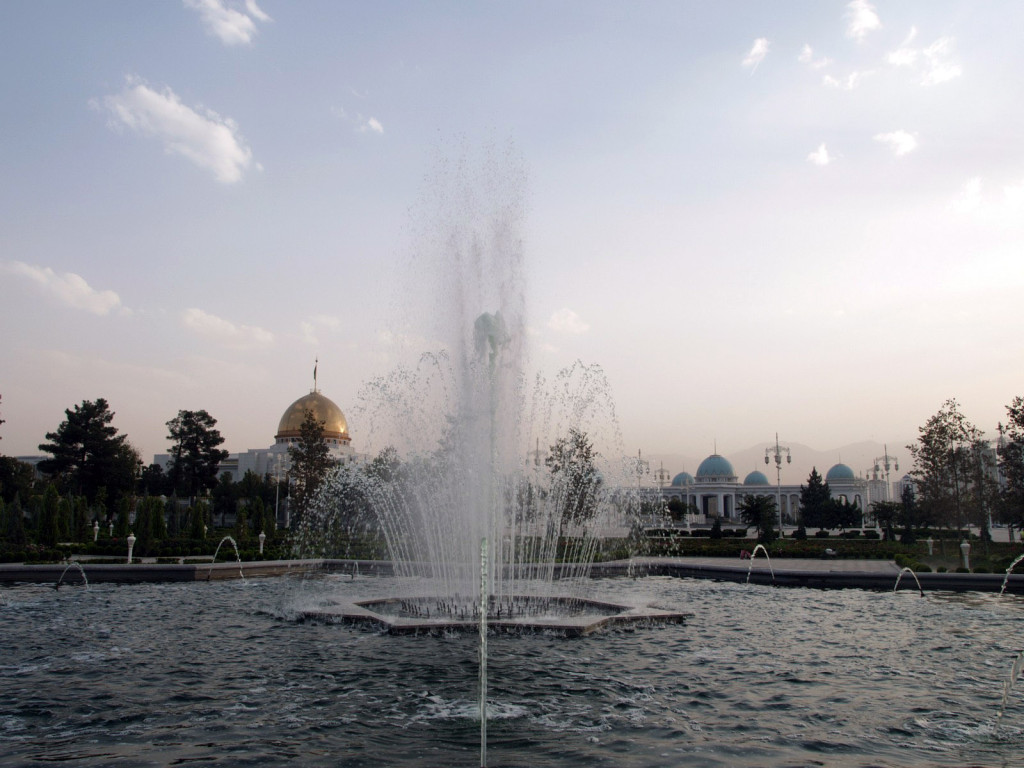
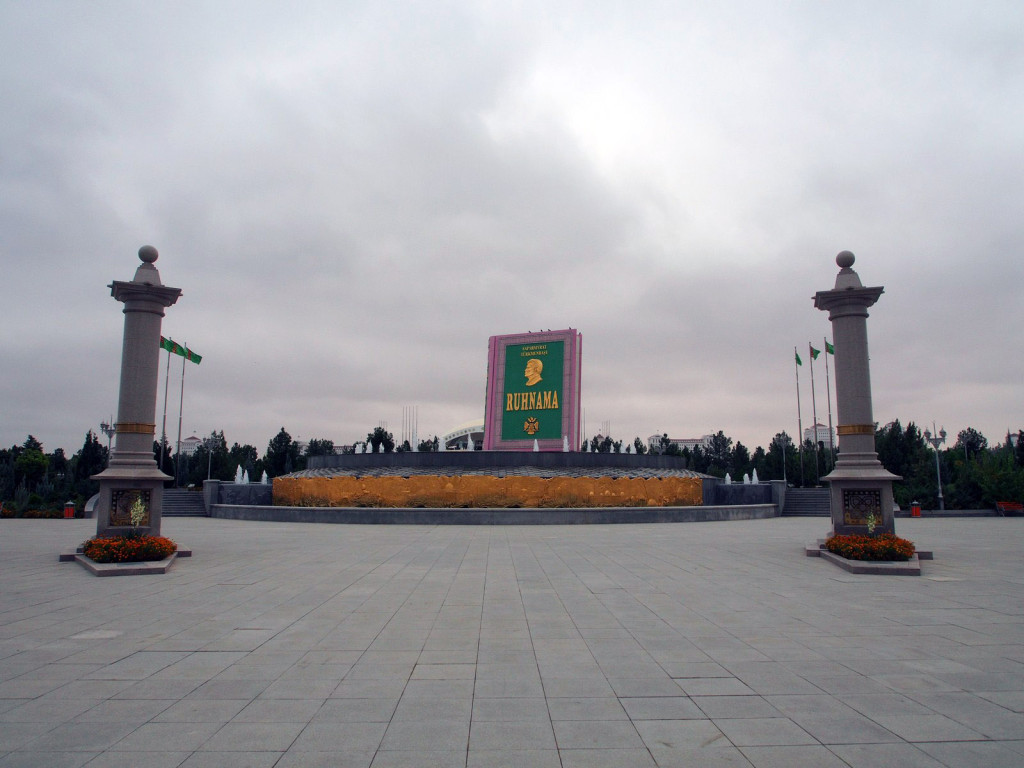
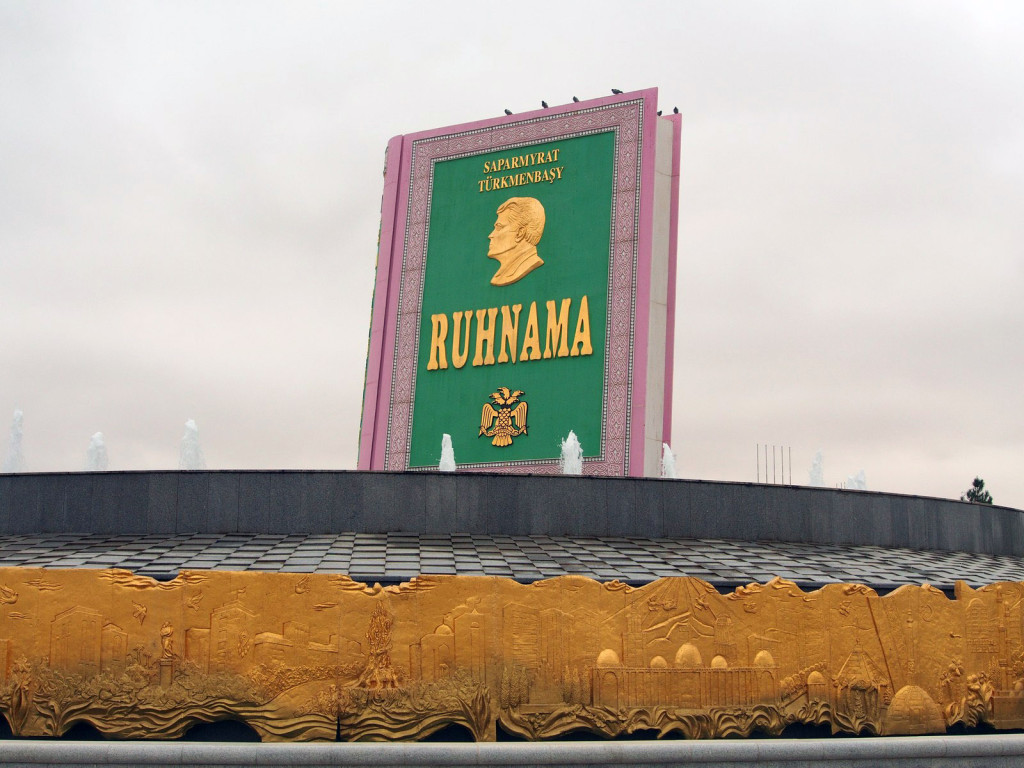
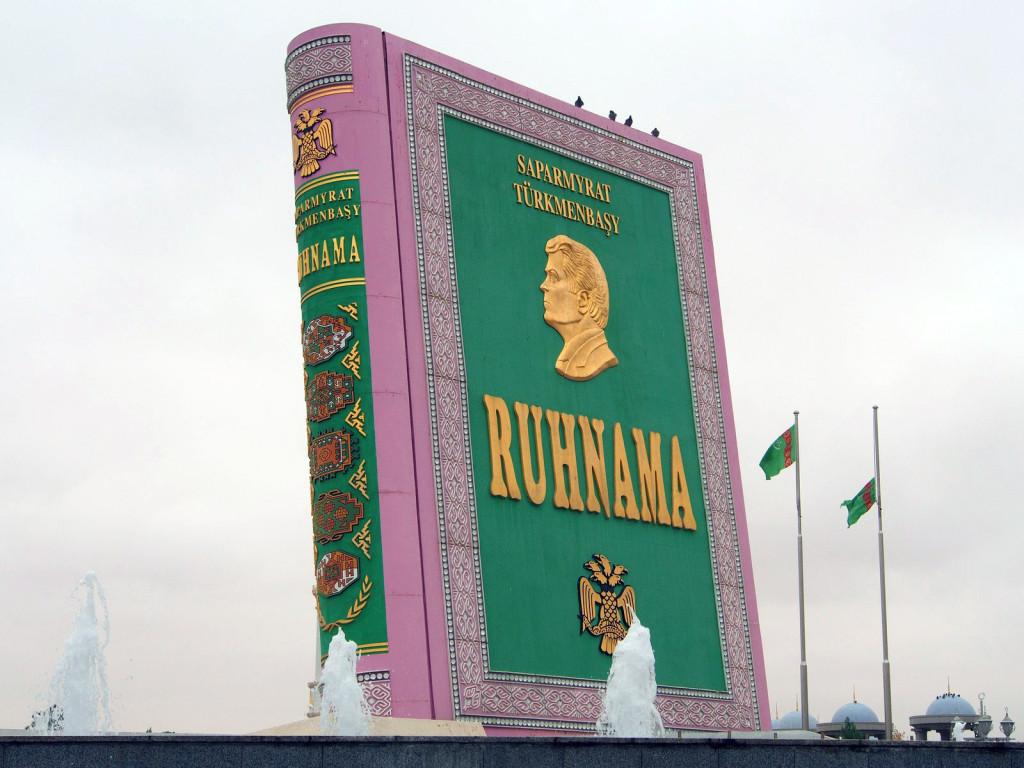
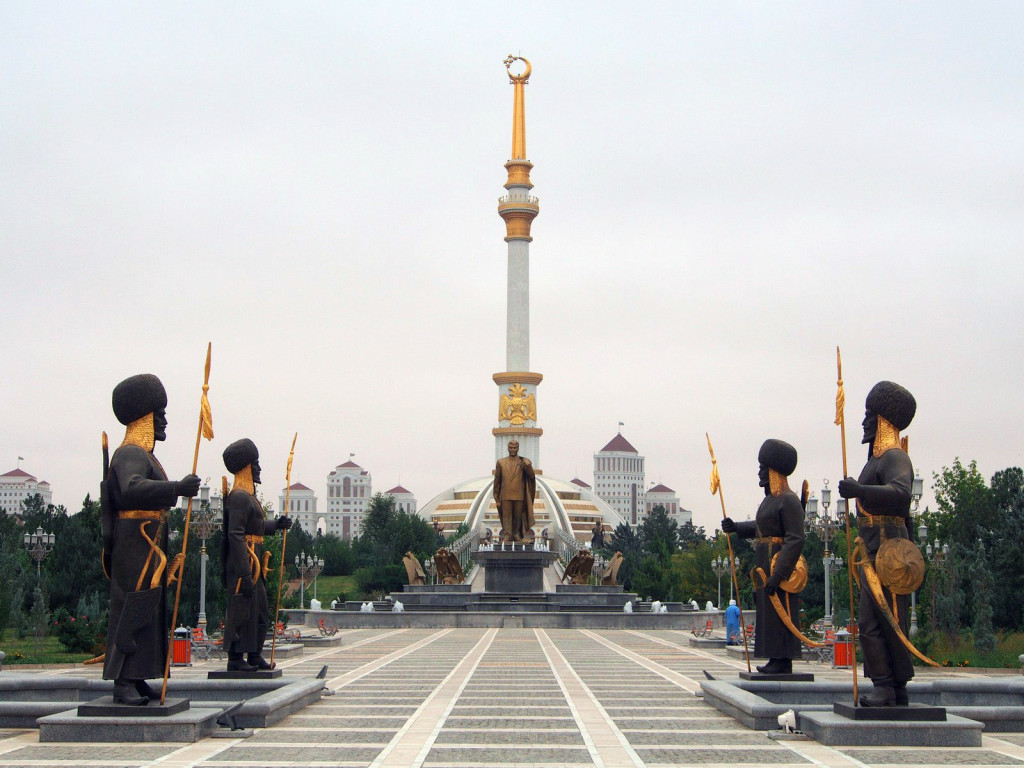
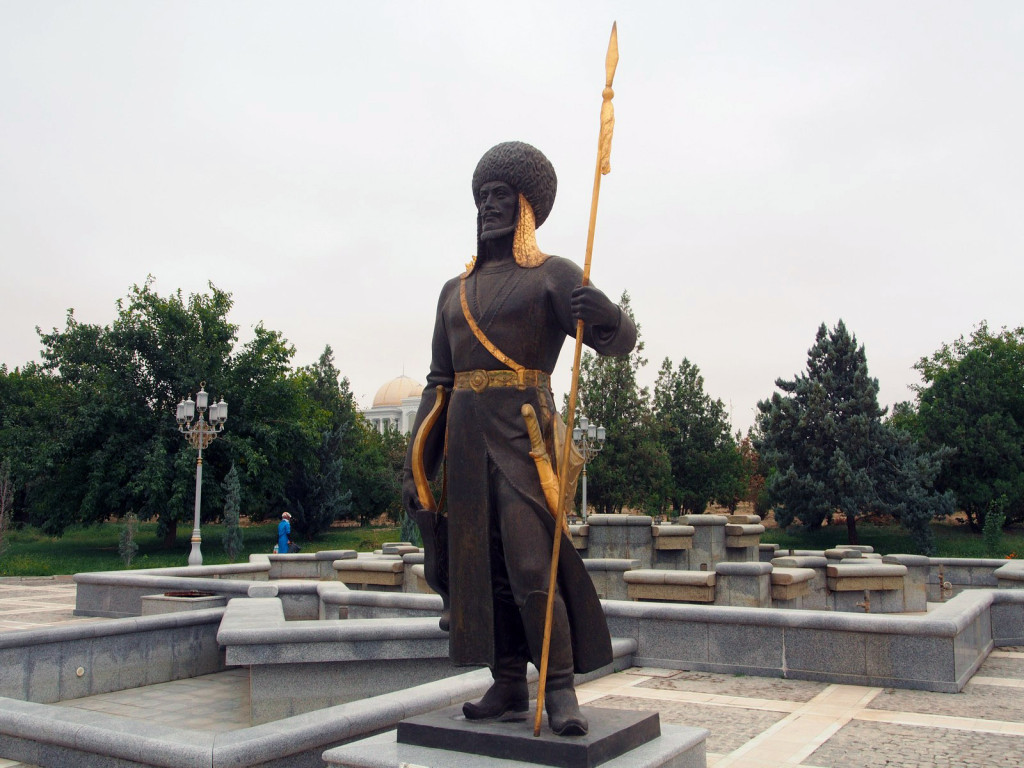
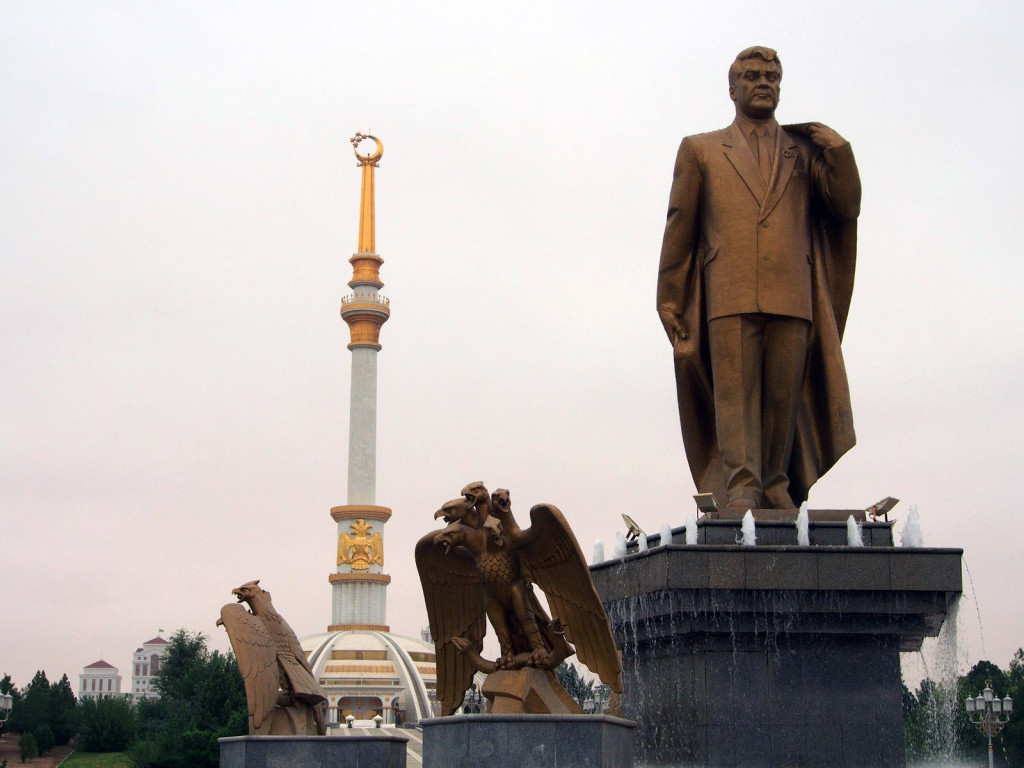

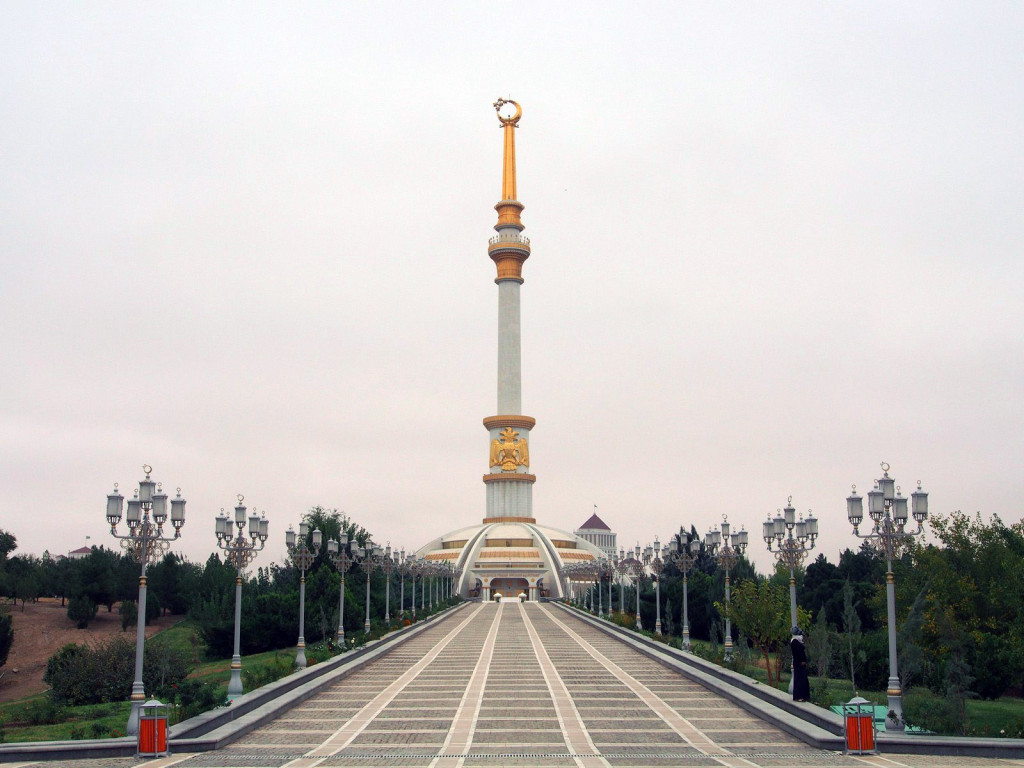
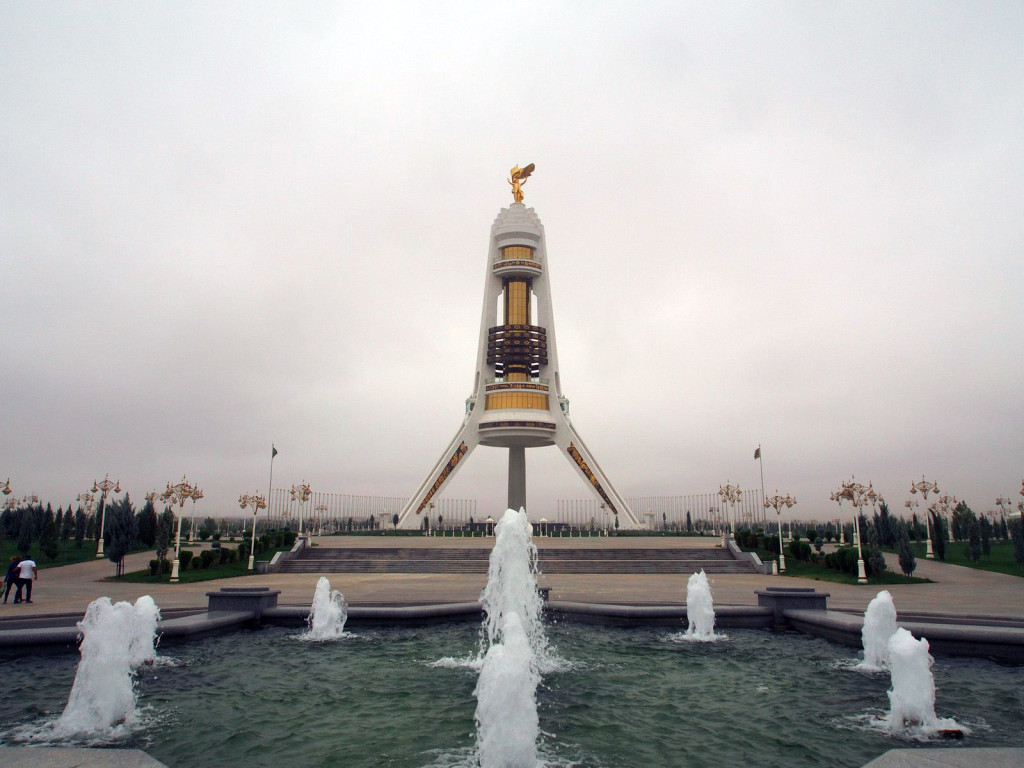
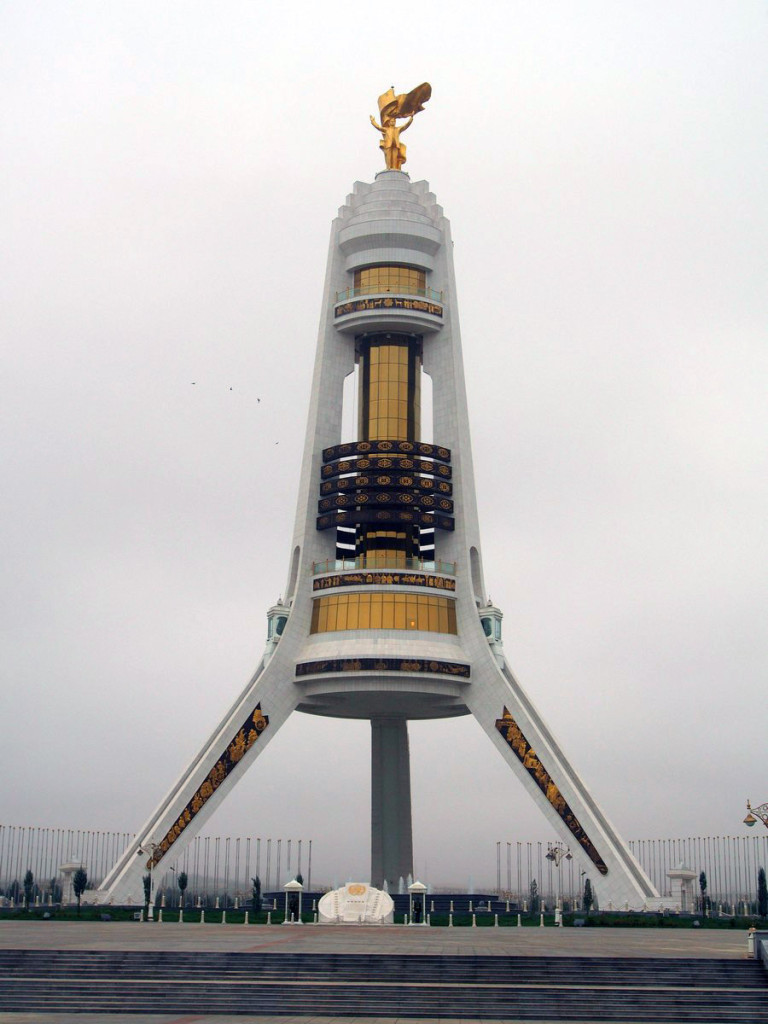
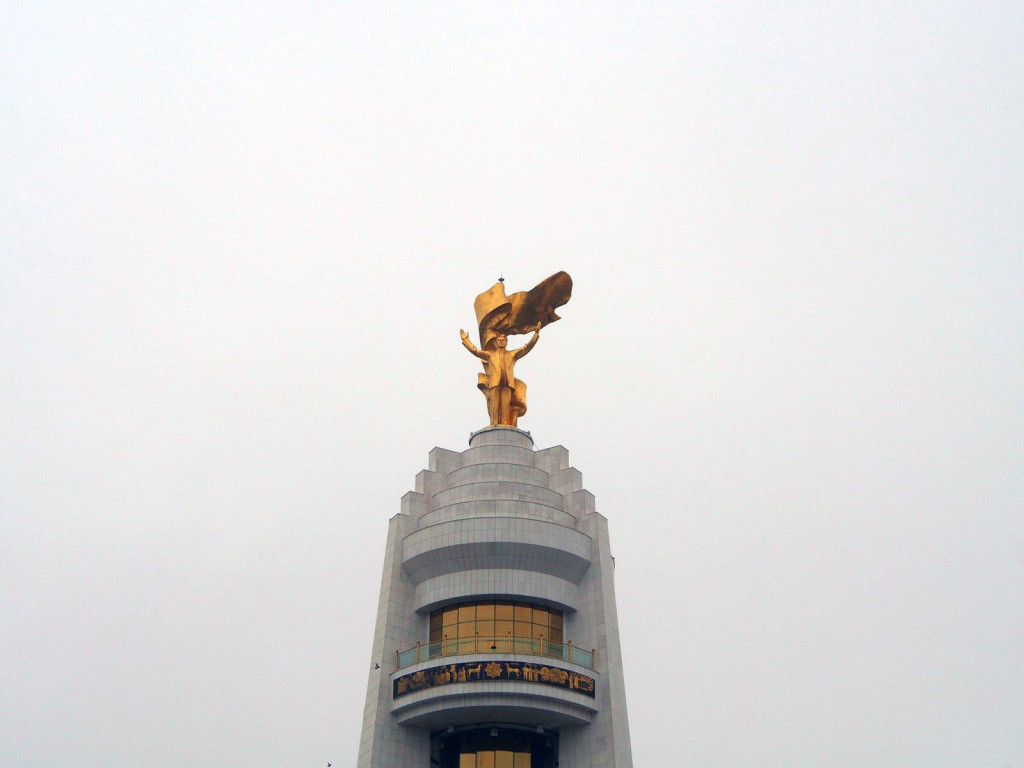
Wow! Amazing place.. Looks like the city isn’t too crowded?
Parts of it, around the official buildings and the government area, are eerily quiet – apart from the police standing on every corner. Other parts of the city have just as much marble and gold, but a more normal amount of people.
Amazing photos David. What an adventure! Take care, hopefully will see you when you return to Sydney. Cheers
Wal Bucci